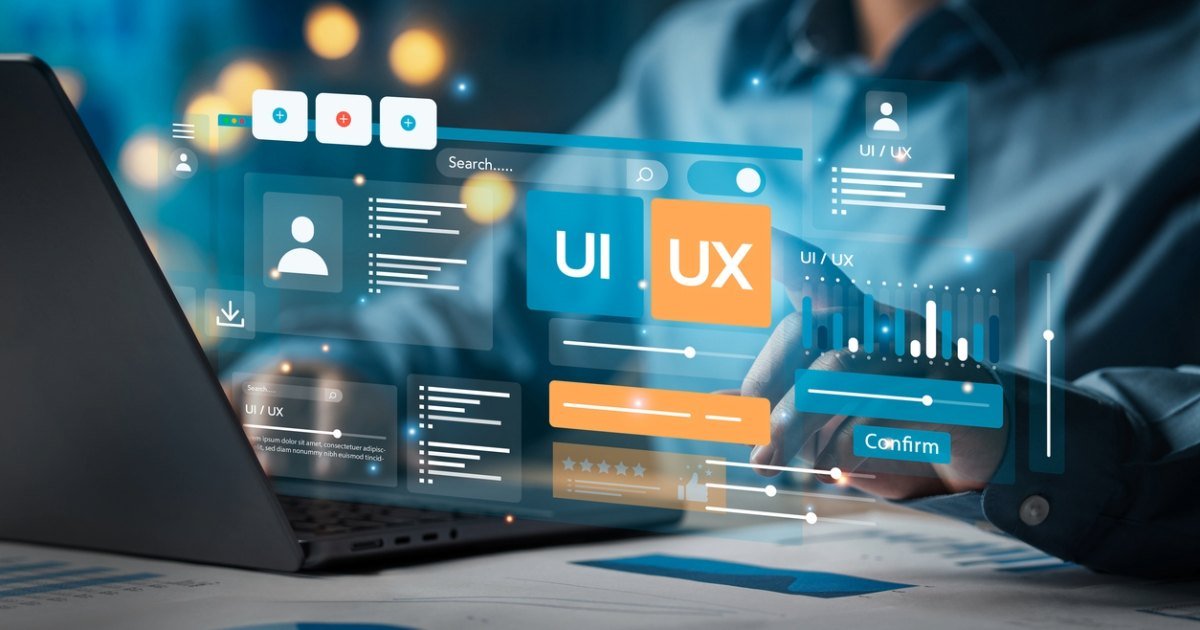If you’re running a business in 2026, you already know this truth: a website isn’t just an online brochure anymore — it’s your growth engine. The question smart companies now ask isn’t “Do we need a website?” but “Is our website generating measurable ROI?”
Gone are the days when brands were satisfied with flashy layouts or trendy color schemes. Today’s market leaders demand website design services that combine creativity with performance — sites that attract, convert, and retain customers.
And behind this evolution lies a powerful intersection of design, marketing, and data.
1. The Shift: From “Good-Looking” to “Goal-Driven” Websites
A decade ago, businesses hired web design agencies to make their websites visually appealing. But in 2026, aesthetics alone don’t pay the bills. Performance metrics — such as conversion rate, bounce rate, lead quality, and user engagement — now determine design success.
According to a 2025 Adobe Experience Cloud study, companies that continuously optimize their web experience see 37% higher ROI from digital channels compared to those that rely on static websites.
What this means: modern website design services aren’t about visuals alone. They’re about experience design, analytics integration, and measurable outcomes.
2. Data-Backed Design: The New Industry Standard
The new era of web design is powered by data, not guesswork.
Top-performing businesses use advanced analytics, AI heatmaps, and behavioral tracking tools to understand how visitors interact with their websites. This information is then used to improve user flow, call-to-action placement, and even color psychology.
For example, AI-enhanced UX testing has become a standard service for every serious web design agency in 2026. Instead of relying on manual A/B testing alone, AI tools predict how design changes will impact conversions before launch.
This has made ROI-driven design both faster and smarter.
3. Beyond Design: Why Integration with Marketing & Sales Matters
A beautiful website that doesn’t convert leads is like a Ferrari without fuel.
This is why modern website design services are deeply integrated with digital marketing services and Salesforce development.
Think of it as a three-layer ecosystem:
- Design: Creates user-focused interfaces that encourage action.
- Marketing: Drives qualified traffic through SEO, paid campaigns, and content.
- Salesforce Development Services: Connects the website’s front-end with CRM tools to track, score, and nurture leads automatically.
When all three align, businesses can measure the true ROI of their website in real-time — from first click to closed deal.
According to Salesforce’s 2025 Digital Transformation Index, 82% of growing companies report higher lead conversion when their website is directly connected to CRM automation systems.
4. Conversion Optimization: The Real Measure of Success
ROI-focused web design isn’t about how much you spend; it’s about how much you earn back.
Modern web design agencies are shifting focus to Conversion Rate Optimization (CRO) — a data-driven process that improves how effectively a site turns visitors into customers.
Here’s what ROI-focused CRO looks like in 2026:
- Personalized user experiences based on browsing behavior and demographics.
- Dynamic content delivery powered by AI (changing offers based on user intent).
- Heatmap analysis for detecting friction points on landing pages.
- Real-time A/B testing integrated with analytics dashboards.
Businesses that invest in CRO-driven web design typically see a 25–40% lift in conversions within 6 months.
5. How Salesforce Development Powers ROI-Based Design
Let’s talk about where Salesforce development services fit in.
In 2026, the best websites don’t stop at capturing leads — they close them. By integrating websites directly with Salesforce CRM, every lead interaction, chat inquiry, or form submission is automatically logged, scored, and assigned to sales teams.
A Salesforce development company can create automation workflows such as:
- Real-time lead routing to specific sales reps.
- Automated follow-up emails triggered by form completions.
- Dynamic dashboards showing conversion performance by campaign.
This seamless integration ensures that every web interaction contributes to tangible revenue — making ROI not just measurable but predictable.
6. Why Small Businesses Need Smarter Website Designers
For startups and local brands, hiring website designers for small business used to be about affordability. But in 2026, small businesses are adopting enterprise-grade solutions thanks to automation and cloud-based tools.
A modern web designer for small businesses must now understand:
- SEO and Google Core Web Vitals
- AI-based personalization
- CRM integration
- Conversion psychology
- Accessibility compliance (WCAG 2.2+)
In short, they’re no longer “designers” — they’re digital strategists.
Small businesses that embrace this holistic approach often see 2.5x higher online lead generation than competitors using basic templates.
7. The New Role of Digital Marketing Services
No ROI-driven website functions in isolation. The engine behind it is a robust digital marketing company that ensures your message reaches the right audience.
Today’s digital marketing ecosystem includes:
- SEO optimization tailored to voice and visual search.
- Targeted social media advertising using AI-based audience segmentation.
- Marketing automation linked directly to CRM and web analytics.
- Predictive analytics for campaign ROI forecasting.
The synergy between digital marketing services and web design ensures that every click is intentional and every visitor is a potential customer.
According to HubSpot’s 2025 Marketing Benchmark Report, businesses that align web design and marketing teams achieve 67% faster lead-to-customer conversions.
8. AI and Automation: The Invisible Architects of ROI
In 2026, automation is the silent engine of ROI-driven web design.
AI tools now analyze behavioral data in real time — recommending layout adjustments, updating content blocks dynamically, and optimizing form flows without manual intervention.
Examples of AI-driven ROI boosters:
- Predictive UX: AI forecasts which design changes will yield higher engagement.
- ChatGPT-style assistants: Embedded on sites to guide users through sales funnels.
- Automated content curation: Adjusts featured products or services based on seasonality or trend data.
This isn’t the future — it’s the present reality of web design.
Businesses adopting AI-based design optimization report 50% faster decision-making and reduced marketing costs.
9. Measuring ROI: The Metrics That Matter
Modern website design services are performance contracts — clients want dashboards, not design files.
Here’s what ROI measurement typically includes:
- Conversion Rate (CR) — How many visitors take action.
- Customer Acquisition Cost (CAC) — Total spend to gain one customer.
- Average Order Value (AOV) — Revenue generated per transaction.
- Return on Ad Spend (ROAS) — Revenue per dollar spent on marketing.
- Lead Quality Score (LQS) — CRM-based scoring of lead potential.
With integrated analytics, companies can track these metrics in real time — connecting web engagement directly to sales outcomes.
10. The Future of ROI-Driven Website Design
Looking ahead, website design in 2027 will be less about static design and more about adaptive ecosystems. Expect to see:
- Voice-first UX for smart devices.
- Hyper-personalized experiences powered by real-time intent data.
- Headless CMS architecture for faster performance.
- AI-driven CRO optimization that learns from every user session.
The future web isn’t just responsive — it’s predictive.
And the companies that adopt ROI-driven design today will lead that transformation tomorrow.
11. Strategic Takeaways for Businesses
Here’s how to ensure your next website is ROI-ready:
- Hire a full-stack web design agency that understands business goals, not just aesthetics.
- Integrate Salesforce development services for end-to-end customer journey tracking.
- Leverage digital marketing services that align content, SEO, and ads with conversion goals.
- Invest in automation and AI tools for ongoing optimization.
- Measure and adapt — treat your website as a living, evolving growth engine.
Conclusion: The Website as a Profit Center
In 2026, the smartest businesses no longer see their websites as costs — they see them as assets.
A well-designed, data-driven site can improve conversions, lower acquisition costs, and generate measurable ROI. Whether you’re a small business or an enterprise-level brand, the right combination of website design services, Salesforce development, and digital marketing services can turn your digital presence into a consistent revenue channel.
Because the future of web design isn’t just about what users see — it’s about what the business earns.



